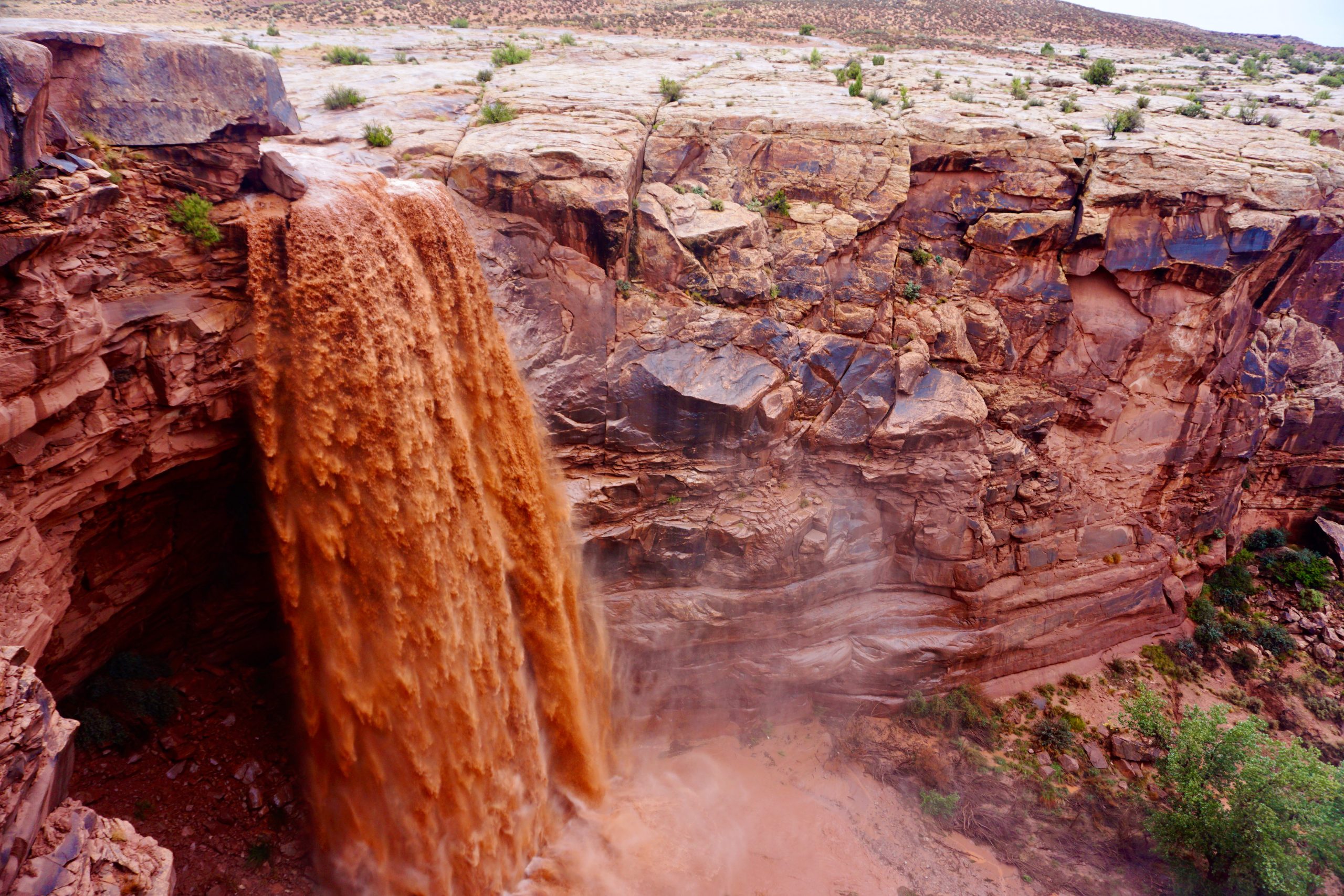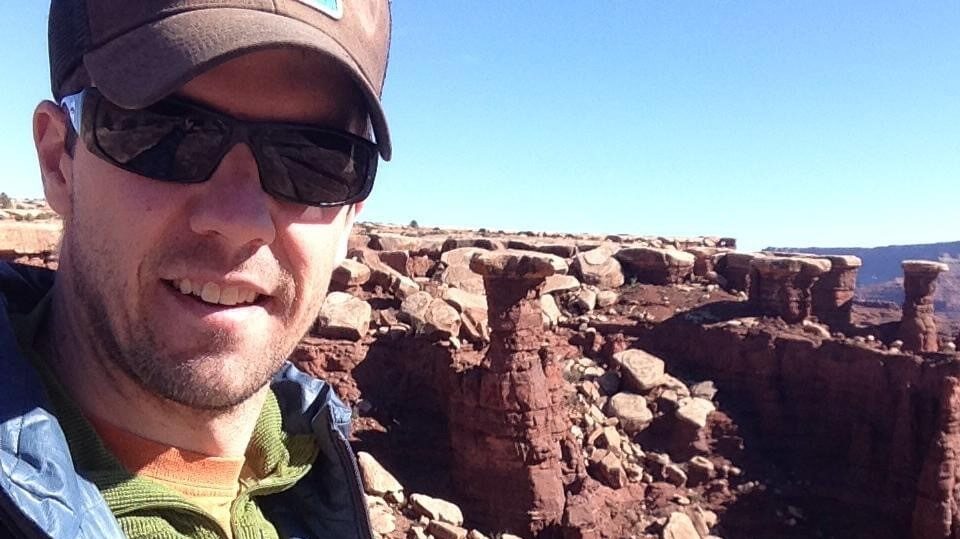Some information may be outdated.
What determines the potential for storms and flash floods — and why don’t they always happen together? This week, Science Moab speaks with Brian McInerney — who spent 30 years as a senior hydrologist for the National Weather Service Forecast Office in Salt Lake City — about thunderstorms, flash floods, canyons, and watering cans.
Science Moab: What was your day-to-day work as a hydrologist?
McInerney: When I was working the flash-flood shift, I had five big high-resolution monitors set up. You put on all your displays, like satellite, radar, and different data. Then, you wait; I’d eat my lunch and glance at the screens, and I’d see maybe a few things popping up.
And then it gets going. You had to figure out how much rain, how much intensity, where were the storms going, were two storms going to collide? Then you get on the phone and start issuing flash-flood warnings.
Science Moab: What are the key ingredients for a flash flood?
McInerney: At 4 a.m. and 4 p.m., every weather-service office in the country launches a weather balloon with an instrument that looks at temperature, pressure, moisture, and wind.
If storms are moving really fast, you’re going to get rained on for a couple of minutes, and then it’s going to go away. If the storms are moving slowly, then you could get a lingering thunderstorm. Do we have cloud cover? If we do, that’s going to suppress convection, which is the lifting mechanism that produces thunderstorms.
Is it getting colder much faster as you go higher in the atmosphere? If that’s the case, then as the air mass lifts, it’s going to start lifting faster and faster, and you’re going to get much bigger thunderstorms. You look at all of these ingredients but it’s really moisture, flow, and location.
They brought hydrologists into forecast offices because meteorologists are good at forecasting weather, but when you look at areas on the ground that may or may not spawn a flash flood, you need education on topography: soils, vegetation, aspect, all these things.
Utah has very little moisture, steep slopes, and incised canyons, which all combine with the atmospheric conditions to create a high flash-flood threat. It’s one of the most flash-flood-prone areas in the country.
Science Moab: What determines flash-flood potential within southeastern Utah?
McInerney: In this landscape, one question is how a thunderstorm moves as it forms. If it’s moving up-canyon, the water has time to drain out of the canyon; think of a watering can and a little hillside as you move up. Now take that same watering can, and start at the top and move it down. Your flow is concentrated faster. Thunderstorms moving down-canyon are the most dangerous.
If we have a thunderstorm that’s moving laterally across canyons, you’ll get a finite amount of water in each canyon. If they’re stationary, and you have enough rain, that’s just as bad as a downslope-moving storm. They’re very dangerous. So what matters is the direction of the rain event and the duration of the storm itself.
Science Moab: How fast do flash-flood waters move?
McInerney: I used to think the water moved crazy fast, but flows actually move roughly between four and 10 miles per hour. It gets higher in super steep areas or with larger flows. It has to do with the location of the storm and how steep and vegetated the ground is.
People sometimes think they can outrun floods, and that’s not the case. If you’re stuck in a canyon, don’t go down-canyon; go up the sides. You won’t be able to outrun it in uneven terrain.
Science Moab: Can you give a breakdown of post-fire floods?
McInerney: During postburn analysis, we examined how hot the fire burned, and whether any vegetation remains. If you find an absence of vegetation and the soil looks cooked, then we do a hydrophobicity test, which examines whether rain will infiltrate the soil or move overland and pick up pieces of soil and downed trees and rocks.
If it doesn’t rain, you’re going to be fine for roughly four years. That’s how long it takes to heal up. But if you get a rain event, it wreaks havoc.
Science Moab is a nonprofit dedicated to engaging community members and visitors with the science happening in Southeast Utah and the Colorado Plateau. To learn more and listen to the rest of Brian McInerney’s interview, visit www.sciencemoab.org/radio. This interview has been edited for clarity.
Appreciate the coverage? Help keep local news alive.
Chip in to support the Moab Sun News.





